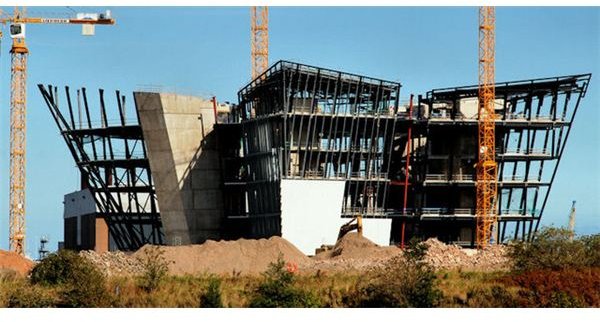Activities of a Project Development Team - Part 1 of 2
Initiation
The project initiation is the first phase in project management, and denotes the launch of the project. The activities of the project development team during the project initiation phase, includes gathering requirements from the customer and other stakeholders to prepare the project scope and project charter.
The project charter is the project authorization that defines the goals, priorities, estimates, budget, and other considerations of the project. The project scope defines the objectives of the project and the nature of work proposed to complete the project.
Image Credit: flickr.com/Wouter Kiel
Planning
One of the critical activities of the project development team, relates to the project planning phase. During this phase, the project development team determines the specific tasks that need executing in order to meet the project goals, and set-up project task schedules, milestones, and deliverables. The team also plans for resources such as labor and materials, and other infrastructure to meet such deliverables.
Best practices during the planning phase include division of tasks based on a work breakdown structure (WBS), and scheduling deliverables using techniques such as, Program Evaluation and Review Technique (PERT), or Critical Path Method (CPM).
Execution
The execution phase of project management relates to the actual implementation of project tasks to meet deliverables and milestones. The project development team ensures implementation of work, in accordance with the project scope and the laid down plans, and handling contingencies that arise during the execution.
Documentation
Another of the important activities of a project development team is documentation. Documentation entails maintaining records of tasks done, preparing handbooks for future maintenance, and developing detailed instructions for the customers. Depending on the nature of the project, documentation may also involve writing an application program interface.
Documentation runs parallel to project execution, or may take place at the end of the closing phase, after removing all glitches, and the project is ready for handing over to the client.
Monitoring and Controlling
Project monitoring entails supervision over the project execution phase to ensure that the project keeps to its time schedule and meets other parameters. The project development team resolves any issues or contingencies that come up, which may disrupt the project schedule.
Project controlling closely relates to the monitoring, and ensures that the project execution takes place with the agreed standards. In software projects, this includes validation, or ensuring that the codes developed work properly, and meet the accepted standards.
Quality Control
One important sub-function of project control, is quality control - or ensuring that the project adheres to the quality standards agreed in the project initiation phase. This role is crucial to catch errors, and to bring about an early resolution to these errors, before they escalate into major obstacles to smooth project execution.
The nature of quality control adopted by the project development team, depends on the quality approach such as Six Sigma, Lean, 5S, Total Quality Management (TQM), or other methodologies adopted for the project. The benefits of Total Quality Management in particular, should not be dismissed.
Risk Management
When considering project development team activities, the characteristics of good project risk management must be looked at.

Risk management entails handling uncertainties, and relates closely to monitoring and control.
Identification of risks takes place early in the project, during the initiation phase, and developing strategies on how to manage such risks, takes place during the planning phase. Risk management during the time of project execution entails approaching the anticipated risks when they arise. Possible risks include the supply chain breaking down, shortage of human resources, or any other related factor.
The role of the project development team is in initiating the planned response to such risks. Another important role is maintaining a risk log, that details the risks encountered and the response to it.
Image Credit: geograph.ie/Albert Bridge
Feedback and Approval
Taking feedback from a client at the end of each deliverable or agreed upon milestone, is another of the important project development team activities. The purpose behind this feedback, is to ensure that the client remains satisfied with the progress, and to incorporate changes suggested by the client. One major issue that many project development teams face at this stage is scope creep, or requests from clients outside the original project charter, and project scope originally specified.
The extent of feedback, depends on the nature of the project and project architecture. Extreme programming architecture for instance, caters to a constant involvement of the client, whereas traditional linear programming architecture, takes client feedback at the end of the execution phase.
Satisfactory feedback leads to client approval, which denotes the end of the execution phase.
Closing
Project closing takes place at the end of the project, on completion of the execution phase. The role of the project development team in the closing stage is integration of the various modules, tying up of the loose ends, improving on the user-friendly features of the project, and adding to the overall appearance, to make the project appear attractive to the customer.
Deployment and Maintenance
Project deployment entails handing over the project to the customer, and providing training to ensure the customer can use the project seamlessly. A related activity is maintaining the project at the client’s site for a year or so, to remove any bugs that may come up during real time running of the project.
The success of a project depends largely on project development team activities, and the way they are approached.
